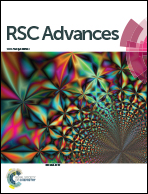Identification of the toxic components in Semen Strychni and their metabolites in rat serum by high performance liquid chromatography coupled with a Q Exactive high-resolution benchtop quadrupole Orbitrap mass spectrometer†
Abstract
Strychnos alkaloids (SAs) are considered to be the main toxic constituents in the traditional Chinese medicine, Semen Strychni. However, a general method for rapid identification of SAs in Semen Strychni and relative metabolites in serum has been time-consuming and difficult to develop due to the high similarity of their structures and physicochemical properties. Hence, this study was conducted to allow rapid and reliable characterization of the alkaloids in SAs extract, the constituents absorbed into blood as well as their metabolites in serum after oral administration of SAs extract based on high performance liquid chromatography coupled with a Q Exactive high-resolution benchtop quadrupole Orbitrap mass spectrometer. The method we developed in the present study only required 16 min with high accurate multiple-stage mass spectrometry (MSn) data. A total of 14 strychnos alkaloids, 5 of which were absorbed into serum, were detected and identified. Moreover, 22 metabolites in serum, including 19 phase I and 3 phase II metabolites were observed and characterized. Results demonstrated that the use of the Q Exactive hybrid quadrupole-Orbitrap mass spectrometer proved to be a very feasible and efficient approach for the rapid separation and identification of the complex constituents in the extract and relative metabolites in vivo. In summary, our study will provide a deep insight into the toxic substances of Semen Strychni and deliver beneficial information for further understanding the in vivo behavior of strychnos alkaloid analogues.


 Please wait while we load your content...
Please wait while we load your content...